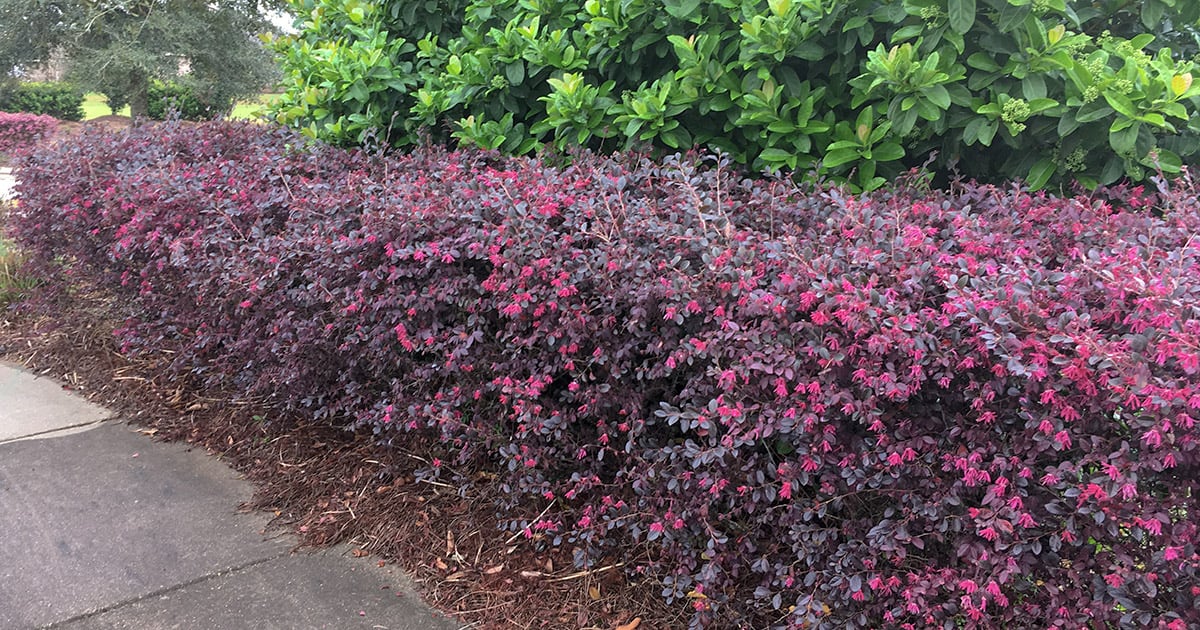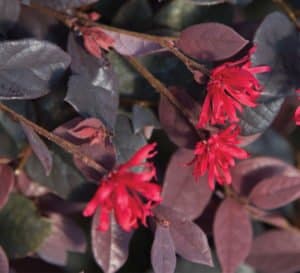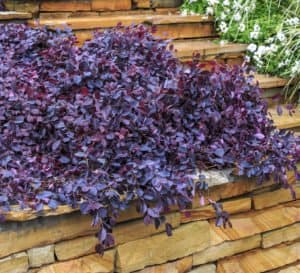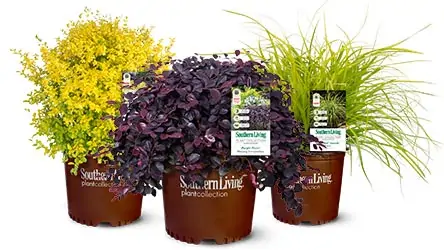By Steve Bender
From relative obscurity, loropetalums have leaped to the forefront of Southern gardens the way Lady Gaga captured the hearts and minds of a grateful America. That is remarkable, seeing as how most people can’t even pronounce the name.
“WHAT-a-petalum?” you say. “Sounds like an ancient Roman spittoon.” Well, Loropetalum is the genus name for a group of shrubs in the witchhazel family that comes to us from China and Japan. The “common” name is Chinese fringe. Only trouble is, that’s also the common name for a tree, Chionanthus retusus, that looks nothing like loropetalum.
So how do people ask for a plant when they can’t pronounce the name?
“Purple bushes,” they demand at the garden center. “I want some of them purple bushes.” They mean they want loropetalums.
Funny thing is, loropetalum isn’t new. It’s been here in the South for a long time, but most people didn’t notice it. That’s because its flowers were white and the leaves were green.
Then somebody discovered seedlings with pink flowers. OMG! Then they discovered seedlings with purple foliage. OMG! OMG! If only they could find a seedling with pink flowers and purple foliage together. They did! OMG! OMG! OMG! (Note to conservative readers: the “G” stands for “golly.”) In fact, they found lots and lots and lots. Soon, hordes of purple loropetalums with pink flowers and purple leaves, all with different names and growth habits, flooded garden centers. How could a conscientious and discerning gardener choose between them?
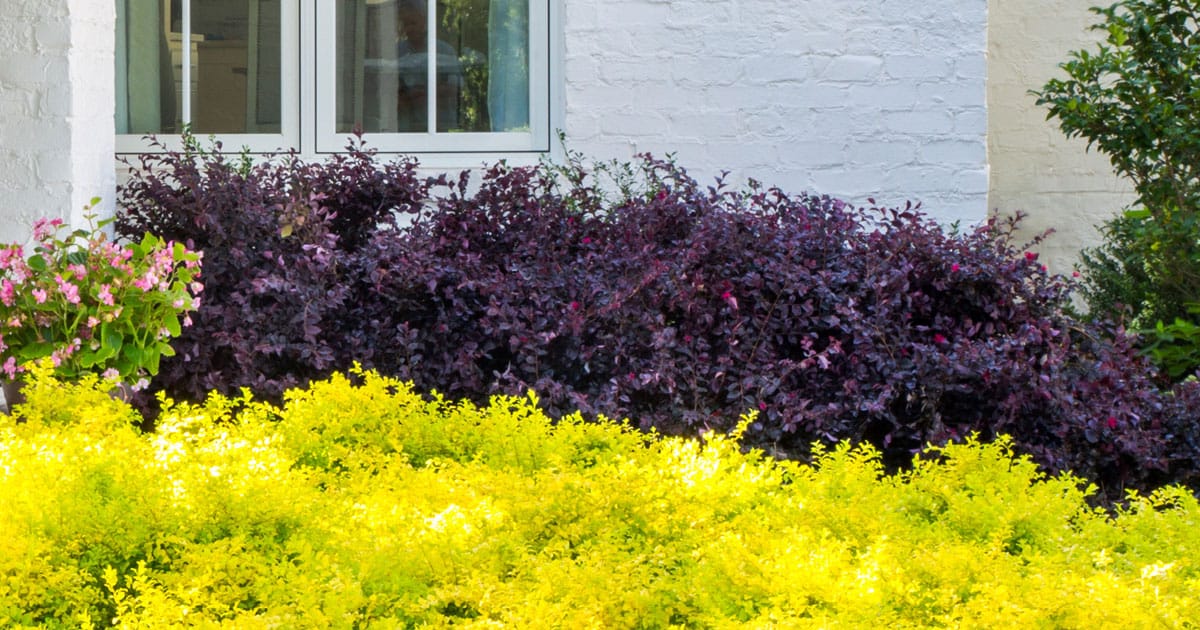
Ask Grumpy, Of Course
As always, the Grump is the sole unimpeachable source of all gardening wisdom. And in this case, he has sifted through all the wannabe loropetalums to present to you what he considers the best. And they’re all in our Southern Living® Plant Collection.
First up—Purple Diamond® Semi-dwarf Loropetalum. One thing people don’t realize when they buy a loropetalum in a one-gallon pot is that it grows fast and it grows big. The regular form can easily grow 12 feet tall and wide in just a few years. So it’s probably not the best choice for planting in front of windows or lining your front walk, unless you’re hiding from the IRS.
Purple Diamond® is different. It grows only 4-6 feet tall and wide with pink flowers in early spring and purple foliage that retains its rich color all summer. This is Grumpy’s personal favorite.
Next up, Purple Pixie® Dwarf Weeping Loropetalum. This one will never eat your house. It’s a true dwarf with a weeping, cascading habit that grows 1-2 feet high and spreads 4-5 feet. You can plant it as an evergreen ground cover, but I think it’s even better for a container, like the plant you see above. You can plant it in a pot that’s 3 feet tall and in a couple of years, you won’t be able to see the sides of the pot. It also combines pink flowers and purple leaves.
Are you like Goldilocks, looking for a dwarf purple bush that’s just right? Purple Daydream® Dwarf Loropetalum stays compact only reaching 2-3 feet high and spreads nicely into a mounding shape. This beauty offers year-round dark, maroon foliage that is drought tolerant and isn’t a favorite of deer.
Pick number four—Emerald Snow® Semi-dwarf Loropetalum. Purple foliage isn’t for everyone. It really doesn’t do much for a red brick house. ‘Emerald Snow’ offers rich green foliage and creamy white flowers. It only grows 4-6 feet tall and 3-4 feet wide—perfect for most home gardens.
Easy to Grow
Loropetalums are easy, easy, easy. Once established, they’re very drought tolerant and frankly, hard to kill. Give them full or part sun and acid to neutral, well-drained soil. (Not alkaline soil, though—the leaves will turn yellow between the veins.) They’re cold-hardy up through Zone 7 and heat-hardy through Zone 9. Prune them right after they finish blooming, but don’t butcher them with the electric shears.
Instead, put down the electric shears and use hand pruners, reducing the shrub’s size while maintaining its fountainlike, billowing shape.
Now you know what to ask for when you’re looking for purple bushes. Tell ’em Grumpy sent you.

